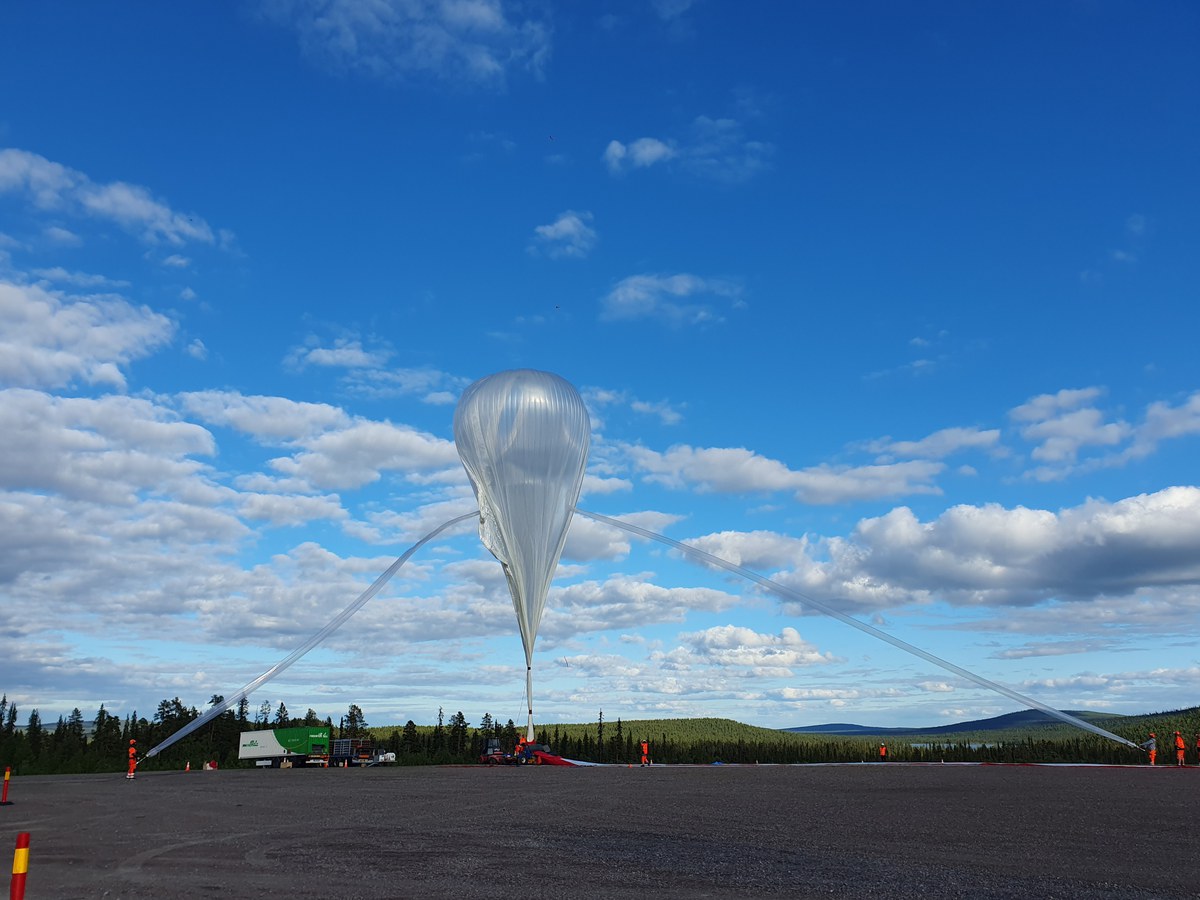Researchers from Jülich and Karlsruhe in Germany launch newly developed measuring instruments to explore the upper layers of the atmosphere
On 22nd June 2024, the launch of a large stratospheric balloon heralded a new chapter in atmospheric research. The balloon carries the new GLORIA-Lite measuring instrument at an altitude of 40 kilometres - around four times higher than commercial aircraft - and travels from the European Space and Sounding Rocket Range (ESRANGE) in northern Sweden to Canada, across the North Atlantic and Greenland. GLORIA-Lite was developed under the leadership of the Institute of Meteorology and Climate Research (IMKASF) at the German Karlsruhe Institute of Technology (KIT), in close collaboration with two institutes at Forschungszentrum Jülich, also in Germany.

"This is the first time that a balloon of this kind has crossed the Atlantic with one of our instruments," says atmospheric researcher Dr Jörn Ungermann from Forschungszentrum Jülich.
The launch by the balloon team from the Centre National d'Études Spatiales (CNES) in Sweden was successful: as planned, the balloon reached its maximum altitude in the stratosphere (second layer of the atmosphere) and its full size with a diameter of around 100 metres - the length of a football pitch.
GLORIA-Lite is a completely newly developed instrument that is intended to continue and significantly improve on the many years of measurement series of its predecessor GLORIA. By using the latest infrared sensors, customised electronics and innovative manufacturing techniques, the size and weight of the new device have been greatly reduced. This now also enables long duration balloons, for example.
The central element of GLORIA-Lite is an imaging Fourier transform spectrometer that analyses the infrared light emitted by over 20 different molecules and aerosols in the atmosphere and calculates the concentration of trace gases. With the help of this data, the scientists can better understand the different dynamic and chemical processes in the upper atmosphere and simulate them in atmospheric computer models.
In times of accelerating climate change, it is particularly important to investigate the effects on the upper atmosphere and track them with long-term measurement series. Increasingly frequent forest fires and their ever higher emissions, for example, contribute to greater air pollution in the stratosphere.
As a demonstrator, GLORIA-Lite also supports the CAIRT satellite project, which is based on the long-standing joint initiative of Forschungszentrum Jülich and KIT and was proposed by an international ESA consortium. CAIRT (www.cairt.eu) is on the shortlist of instruments for the eleventh Earth Explorer satellite mission in the early 2030s.
Further weather balloons launched
In addition to the measurement flight with GLORIA-Lite, another large helium balloon was launched on 27th June as part of the Atmosfer project. This measurement flight focussed on measurements over northern Scandinavia. On board was the NIXE balloon instrument for measuring ice clouds, a joint development of the Institute for stratosphere research at Forschungszentrum Jülich and the University of Luleå in Sweden. NIXE was used to take high-resolution images of ice crystals in clouds and to determine the aerosol concentration in different size ranges. The results will be used, among other things, to validate a satellite demonstrator instrument of the ESA FORUM mission. In addition, six smaller weather balloons with precise hygrometers were launched as part of an international campaign to compare the instruments. These hygrometers are designed to measure particularly small but climate-relevant water vapour concentrations in the stratosphere.
Further images: https://fz-juelich.sciebo.de/s/fEKtaFSKqELPJJk
Contact Persons
- Institute of Climate and Energy Systems (ICE)
- Stratosphere (ICE-4)
Dr. Christian Rolf
wissenschaftlicher Mitarbeiter
- Institute of Climate and Energy Systems (ICE)
- Stratosphere (ICE-4)








